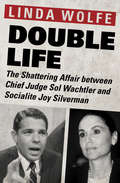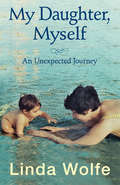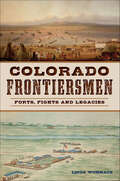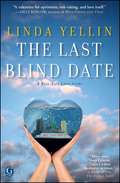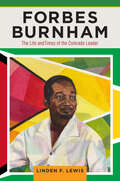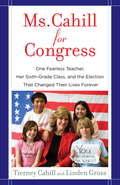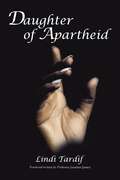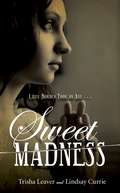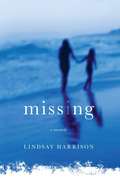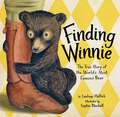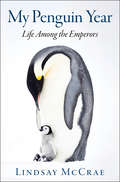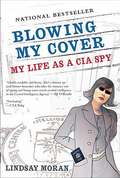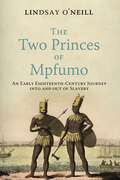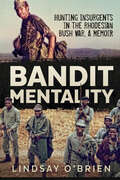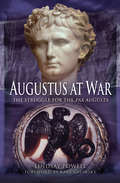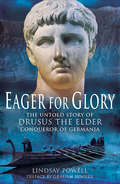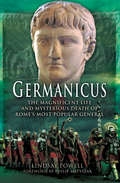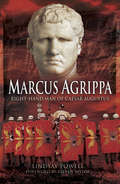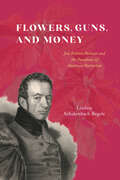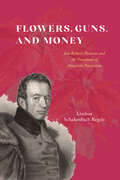- Table View
- List View
To Live For: A Mother's Cry For Justice
by Linda WojasOn March 22, 1991 after a 14-day trial in Rockingham County Superior Court, New Hampshire, my daughter Pamela Smart was wrongfully found guilty in the murder of her husband, Gregory Smart. She was convicted of being an accomplice to first-degree murder, conspiracy to commit murder and witness tampering. Only 22 years old at the time, she was given a life without parole sentence. <p><p>My daughter did not commit these crimes. I'm not saying this because she's my daughter, but there was no credible forensic evidence to prove she had any role in Gregory's murder. This trial spiraled into a media circus and the un-sequestered jury believed all the lies that the local news stations were saying about Pamela's role. Billy Flynn who testified at trial that he physically pulled the trigger, as well as testifying against Pamela at trial, he ended up pleaded guilty to second-degree murder. He was sentenced to 40 years to life, with the option to shave 12 years off if he behaved himself in prison. He was released in 2015. Flynn was 16 when he shot my 24-year-old son-in-law Gregory Smart to death, and accused Pamela of telling him to carry out this heinous act. <p><p>Nicole's Kidman's portrayal of Pamela's life in the cult film "To Die For" is just one example of the way the media has exploited her pain, our family tragedy. I've bottled up my feelings for 30 years now and finally decided to release personal and revealing letters between Pamela and myself, to share with the public so people can see the truth behind all the lies. This is the first journal I am releasing. We have lots more to come. <p><p>I will continue to fight for Pamela's freedom because she's innocent and has so much left of her life to offer society. I want her home before I die and will continue to file petitions to get the executive council of New Hampshire to free Pamela. This is my book. This is our story. This is what I live for.
Double Life: The Shattering Affair between Chief Judge Sol Wachtler and Socialite Joy Silverman
by Linda WolfeA &“spellbinding&” account of the New York judge who was brought down by prescription drugs, sexual obsession, and a shocking criminal conviction (Ann Rule). He was the top justice of New York&’s highest court. She was a stunning socialite and his wife&’s step-cousin. In 1993 Sol Wachtler was convicted of blackmail and extortion against Joy Silverman, his former mistress. How did a respected jurist and one of the most prominent men in America end up serving time in prison? Linda Wolfe starts at the beginning—from Wachtler&’s modest Brooklyn upbringing through his courtship and marriage to Joan Wolosoff, the only child of a wealthy real estate developer. Joy Fererh was three and a half when her father walked out. When she and Sol met, he was fifty-five and nearing the pinnacle of his legal career. She was a thirtysomething stay-at-home mother who, with Sol&’s help, made a career for herself as a Republican Party fundraiser. They kept their affair a secret—until an explosive mix of sex, power, betrayal, and prescription-drug abuse set the stage for the tabloid headlines of the decade.
My Daughter, Myself: An Unexpected Journey
by Linda WolfeA riveting memoir about the passions and perplexities of the mother-daughter bond In My Daughter, Myself, acclaimed journalist Linda Wolfe chronicles her thirty-eight-year-old daughter's near-fatal stroke, the arduous course of physical and mental rehabilitation that led to the young woman's remarkable recovery, and the profound ways in which that journey from morbidity to health tested and changed every member of their blended family. Heart-stopping and highly personal, Wolfe's memoir is an inspiring account of how a mother, suddenly confronted by every mother's worst nightmare, must master the unfamiliar language of hospitals and illness, discover untapped wells of resilience within both her daughter and herself, and ultimately learn to let her daughter be her guide as they embark on an altogether new chapter in their lives.
Colorado Frontiersmen: Forts, Fights and Legacies (The History Press)
by Linda WommackEarly Icons and Landmarks As western migration came to the Colorado frontier, forts were established to protect the settlers. These forts were intertwined with the lives of the frontiersmen. Scout Thomas Tate Tobin oversaw the workers who built the adobe fortress known as Fort Garland. Here, Tobin delivered the heads of the murderous Espinosas gang to Colonel Sam Tappan. Fort Sedgwick, originally known as Camp Rankin, was attacked by the Cheyenne Dog soldiers, including George Bent. Fort Lyon, an expanded fortress of William Bent's third fort, became the staging point for Colonel John M. Chivington's march to Sand Creek where peaceful Cheyenne were murdered. Later, Christopher "Kit" Carson died in the fort's chapel. Legendary Jim Beckwourth was associated with both Fort Vasquez and Fort Pueblo. Author Linda Wommack revisits the glory and the mistakes of the frontiersmen who defined Colorado and the forts that dotted the wild landscape.
The Last Blind Date
by Linda YellinA fun, charming memoir about a woman who falls in love, packs her bags, and starts over in the city that eats its young.
The Last Blind Date
by Linda YellinA fun, charming memoir about a woman who falls in love, packs her bags, and starts over in the city that eats its young.
Forbes Burnham: The Life and Times of the Comrade Leader (Critical Caribbean Studies)
by Linden F. LewisIt is virtually impossible to understand the history of modern Guyana without understanding the role played by Forbes Burnham. As premier of British Guiana, he led the country to independence in 1966 and spent two decades as its head of state until his death in 1985. An intensely charismatic politician, Burnham helped steer a new course for the former colony, but he was also a quintessential strongman leader, venerated by some of his citizens yet feared and despised by others. Forbes Burnham: The Life and Times of the Comrade Leader is the first political biography of this complex and influential figure. It charts how the political party he founded, the People’s National Congress, combined nationalist rhetoric, socialist policies, and Pan-Africanist philosophies. It also explores how, in a country already deeply divided between the descendants of African slaves and Indian indentured servants, Burnham consolidated political power by intensifying ethnic polarizations. Drawing from historical archives as well as new interviews with the people who knew Burnham best, sociologist Linden F. Lewis examines how his dictatorial tendencies coexisted with his progressive convictions. Forbes Burnham is a compelling study of the nature of postcolonial leadership and its pitfalls.
Ms. Cahill for Congress
by Tierney Cahill Linden GrossThe remarkable story of a teacher who ran a grassroots campaign for Congress . . . from her sixth-grade classroom “You can’t run for office in this country unless you’re a millionaire or you know a lot of millionaires. ” This offhand remark from one of her sixth-grade students dismayed public school teacher Tierney Cahill. When she told the kids that in a democracy anyone can run for office, they dared her to prove it–by running herself. She accepted their challenge on one condition: that they, her students, manage the campaign. A single mom with three kids and more than one job to make ends meet, Cahill was in for a decidedly uphill battle, especially as a Democrat in largely Republican Reno, Nevada. But Cahill had always felt a responsibility to make a positive impact on an increasingly inequitable world. With her eager students leading the way, and a war chest of just seven thousand dollars (compared to opponents with one hundred times the funds), Cahill not only got her name on the ballot but she won the Democratic primary. And as the campaign moved forward, Cahill’s students blossomed beyond her wildest expectations. Ms. Cahill for Congressis the inspiring story of an exceptional teacher who proved that anyone really can run for office–and even without money or connections, make a difference in a great many lives. From the Trade Paperback edition.
Daughter of Apartheid
by Lindi TardifIt&’s been two decades since the fall of apartheid, a quarter century since the liberation of Eastern European states, five decades since the death of American &“Jim Crow,&” and seventy-plus years since the beginning of the emancipation of the African states. Freedom has advanced, yet there are some Black people in South Africa, the United States, and other parts around the globe who question if it has advanced far enough and are embittered.I am a Black woman born to the racist apartheid regime of South Africa. My family suffered the slights of apartheid--petty and grand--as well as the poverty, degradation, street violence, lack of opportunity, and other ills of the system.Twenty years old when apartheid gave way to the Rainbow Nation, I have lived about half my life under that system. Those who came before me knew only separation and oppression, while those who followed were born to the idea that &“South Africa belongs to all who live in it&”. My generation--perhaps it&’s not really a generation, but rather a seven- to ten-year cohort--knows both. Therefore. My generation has a unique perspective on what happened then as well as what is happening now, on transitioning from restriction to freedom, on recognizing and celebrating progress, on pushing through negatives to embrace forgiveness, hope, and humanity, and on understanding the importance of choice.In telling my story, as well as the stories of some of my friends and teachers, I share my perspective on the issues I have grappled with--including choice, identity, forgiveness, and humanity--with those who are wrestling with similar issues in the United States, my adopted home country, and in South Africa, the country of my birth. Deprivation and marginalization are, after all, as hurtful and debilitating in inner city Baltimore as they are in Soweto, and making a deliberate decision to move forward in the face of either, or both, is always powerful, no matter what your address or particular circumstances.
Sweet Madness
by Trisha Leaver Lindsay CurrieWho was Lizzie Borden? A confused young woman, or a coldhearted killer? For generations, people all over the world have wondered how Andrew Borden and his second wife, Abby, met their gruesome deaths. Lizzie, Andrew's younger daughter, was charged, but a jury took only 90 minutes to find her not guilty. In this retelling, the family maid, Bridget Sullivan, shines a compassionate light on a young woman oppressed by her cheap father and her ambitious stepmother. Was Lizzie mad, or was she driven to madness?
Missing: A Memoir
by Lindsay HarrisonA beautifully written, intensely poignant memoir that looks at grief, family dynamics, and what happens when your world comes crashing down.A twenty-five-year-old recent graduate of Columbia University’s MFA program, Lindsay Harrison began writing Missing as a way to cope with a terrible loss. During her sophomore year at Brown University, Lindsay received a phone call from her brother that her mother was missing. Forty days later they discover the unthinkable: their mother’s body had been found in the ocean. Missing is at first a page-turning account of those first forty days, as it chronicles dealings with detectives, false sightings, wild hope, and deep despair. The balance of the story is a candid, emotional exploration of a daughter’s search for solace after tragedy as she tries to understand who her mother truly was, makes peace with her grief, and becomes closer to her father and brothers as her mother’s death forces her to learn more about her mother than she ever knew before.
Rangers: A Visual Celebration of 140 Glorious Years
by Rangers Fc Lindsay HerronPeppered throughout with more than 200 images from Ibrox's official archives - many of them never before published - this sumptious publication captures the club's rich heritage and proud pedigree of great managers and players, devoted fans, and an almost endless list of trophies. Rangers FC has experienced the highs and lows of everything that the sport can throw at it, yet the passion and faith of its enormous fan base continues to endure as the club enters a brave new era. This evocative new publication seeks to pay testament to the Ibrox spirit and everything it stands for.
Rangers: A Visual Celebration of 140 Glorious Years
by Rangers Fc Lindsay HerronPeppered throughout with more than 200 images from Ibrox's official archives - many of them never before published - this sumptious publication captures the club's rich heritage and proud pedigree of great managers and players, devoted fans, and an almost endless list of trophies. Rangers FC has experienced the highs and lows of everything that the sport can throw at it, yet the passion and faith of its enormous fan base continues to endure as the club enters a brave new era. This evocative new publication seeks to pay testament to the Ibrox spirit and everything it stands for.
Finding Winnie: The True Story of the World's Most Famous Bear
by Sophie Blackall Lindsay MattickBefore Winnie-the-Pooh, there was a real bear named Winnie. In 1914, Harry Colebourn, a veterinarian on his way to tend horses in World War I, followed his heart and rescued a baby bear. He named her Winnie, after his hometown of Winnipeg, and he took the bear to war. Harry Colebourn's real-life great-granddaughter tells the true story of a remarkable friendship and an even more remarkable journey--from the fields of Canada to a convoy across the ocean to an army base in England...And finally to the London Zoo, where Winnie made another new friend: a real boy named Christopher Robin. Here is the remarkable true story of the bear who inspired Winnie-the-Pooh.<P><P> Winner of the Caldecott Medal
My Penguin Year: Life Among the Emperors
by Lindsay McCraeA "remarkable memoir" (Nature) of life with an emperor penguin colony, gorgeously illustrated with 32 pages of exclusive photography For 337 days, award-winning wildlife cameraman Lindsay McCrae intimately followed 11,000 emperor penguins amid the singular beauty of Antarctica. This is his masterful chronicle of one penguin colony’s astonishing journey of life, death, and rebirth—and of the extraordinary human experience of living amongst them in the planet’s harshest environment.A miracle occurs each winter in Antarctica. As temperatures plummet 60° below zero and the sea around the remote southern continent freezes, emperors—the largest of all penguins—begin marching up to 100 miles over solid ice to reach their breeding grounds. They are the only animals to breed in the depths of this, the worst winter on the planet; and in an unusual role reversal, the males incubate the eggs, fasting for over 100 days to ensure they introduce their chicks safely into their new frozen world.My Penguin Year recounts McCrae's remarkable adventure to the end of the Earth. He observed every aspect of a breeding emperor's life, facing the inevitable sacrifices that came with living his childhood dream, and grappling with the personal obstacles that, being over 15,000km away from the comforts of home, almost proved too much. Out of that experience, he has written an unprecedented portrait of Antarctica’s most extraordinary residents.
Blowing My Cover
by Lindsay MoranCall me naïve, but when I was a girl-watching James Bond and devouring Harriet the Spy-all I wanted was to grow up to be a spy. Unlike most kids, I didn't lose my secret-agent aspirations. So as a bright-eyed, idealistic college grad, I sent my resume to the CIA. Getting in was a story in itself. I peed in more cups than you could imagine, and was nearly condemned as a sexual deviant by the staff psychologist. My roommates were getting freaked out by government investigators lurking around, asking questions about my past. Finally, the CIA was training me to crash cars into barriers at 60 mph. Jump out of airplanes with cargo attached to my body. Survive interrogation, travel in alias, lose a tail. One thing they didn't teach us was how to date a guy while lying to him about what you do for a living. That I had to figure out for myself. Then I was posted overseas. And that's when the real fun began.
The Two Princes of Mpfumo: An Early Eighteenth-Century Journey into and out of Slavery (The Early Modern Americas)
by Lindsay O'NeillA fascinating account of two eighteenth-century princes from East Africa, their travels, and their encounters with the British Empire and slaveryIn 1716 two princes from Mpfumo—what is today Maputo, the capital of Mozambique—boarded a ship licensed by the East India Company bound for England. Instead, their perfidious captain sold them into slavery in Jamaica. After two years of pleading their case, the princes—known in the historical record as Prince James and Prince John—convinced a lawyer to purchase them, free them, and travel with them to London. The lawyer perished when a hurricane wrecked their ship, but the princes survived and arrived in England in 1720. Even though the East India Company had initially thought that the princes might assist in their aspirations to develop a trade for gold in East Africa and for enslaved labor in Madagascar, its interest waned. The princes would need to look elsewhere to return home. It was at this point that members of the Royal African Company and the Society for Promoting Christian Knowledge took up their cause, in the hope that profit and perhaps Christian souls would follow. John would make it home, but tragically, James would end his own life just before the ship sailed for Africa.In The Two Princes of Mpfumo, Lindsay O’Neill brings to life individuals caught up in the eighteenth-century slave trade. O’Neill also shows how the princes’ experiences reflect the fragmented, chaotic, and often deadly realities of the early British empire. A fascinating and deeply researched historical narrative, The Two Princes of Mpfumo blurs the boundaries between the Atlantic and Indian ocean worlds; reveals the intertwined networks, powerful individuals, and unstable knowledge that guided British attempts at imperial expansion; and illuminates the power of African polities, which decided who lived and who died on their coasts.
Bandit Mentality: Hunting Insurgents in the Rhodesian Bush War, A Memoir
by Lindsay O’BrienA former officer of British South Africa&’s anti-terrorist unit recounts his experiences on the frontlines of the Rhodesian Bush war from 1976–1980. A native of New Zealand, Lindsay &‘Kiwi&’ O&’Brien served in the British South Africa Police Support Unit&’s anti-terrorist battalion. He traveled across the country as a section leader and a troop commander before joining the UANC political armies as trainer and advisor. The BSA Support Unit started poorly supplied and equipped, but the caliber of the men, mostly African, was second-to-none. Support Unit specialized in the &“grunt&” work inside Rhodesia with none of the flamboyant helicopter or cross-border raids carried out by the army. O&’Brien&’s war was primarily within selected tribal lands, seeking out and destroying Communist guerilla units in brisk close-range battles with little to no support. O&’Brien moved from the police to working with the initial UANC deployment in the Zambezi Valley where the poorly trained recruits had to learn fast or die. O&’Brien&’s account is a foreign-born perspective from a junior commander uninterested in promotion and the wrangling of upper command. He was decorated and wounded three times.
Augustus at War: The Struggle for the Pax Augusta
by Lindsay PowellA penetrating assessment of Augustus as ancient Rome&’s military commander-in-chief. The words Pax Augusta—or Pax Romana—evoke a period of uninterrupted peace across the vast Roman Empire. Lindsay Powell exposes this as a fallacy. Almost every year between 31 BC and AD 14 the Roman Army was in action somewhere, either fighting enemies beyond the frontier in punitive raids or for outright conquest; or suppressing banditry or rebellions within the borders. Remarkably, over the same period, Augustus succeeded in nearly doubling the size of the Empire. How did this second-rate field commander, known to become physically ill before and during battle, achieve such extraordinary success? Did he, in fact, have a grand strategy? Powell reveals Augustus as a brilliant strategist and manager of war. As commander-in-chief (imperator) he made changes to the political and military institutions to keep the empire together, and to hold on to power himself. His genius was to build a team of loyal but semi-autonomous deputies (legati) to ensure internal security and to fight his wars for him, while claiming their achievements as his own. The book profiles more than 90 of these men, as well as the military units under their command, and the campaigns they fought. The book is lavishly illustrated with 23 maps, 42 color plates, 13 black-and-white figures and five order of battle schematics. With a foreword by Karl Galinsky, this book breaks new ground in explaining the extraordinary achievement of Caesar Augustus.
Eager for Glory: The Untold Story of Drusus the Elder, Conqueror of Germania
by Lindsay Powell&“The first biography of an important personality from the beginnings of Rome&’s empire&” (Graham Sumner, coauthor of Arms and Armour of the Imperial Roman Soldier). Nero Claudius Drusus Germanicus (Drusus the Elder) was the first conqueror of Germania (the Netherlands and Germany) and one of ancient Rome&’s most beloved military heroes. Yet there has never been a full volume dedicated to his remarkable story, achievements, and legacy. Eager for Glory brings this heroic figure back to life for a modern audience. Drusus was a stepson of Augustus through his marriage to Livia. As a military commander he led daring campaigns by sea and land that pushed the northern frontiers of Rome&’s empire to the Elbe River. He oversaw one of the largest developments of military infrastructure of the age. He married Marc Antony&’s daughter, Antonia, and fathered Germanicus, Rome&’s most popular general, and the future emperor Claudius. He was grandfather of Caligula. He died when he was only twenty-nine and was revered in death. Drawing on ancient texts, evidence from inscriptions and coins, the latest findings in archaeology, as well as astronomy and medical science, Lindsay Powell has produced a long overdue and definitive account of this great Roman.
Germanicus: The Magnificent Life and Mysterious Death of Rome's Most Popular General
by Lindsay Powell&“The story of a Roman Emperor that might have been&” (Fighting Times). Germanicus was regarded by many Romans as a hero in the mold of Alexander the Great. His untimely death, in suspicious circumstances, ended the possibility of a return to a more open republic. This, the first modern biography of Germanicus, is in parts a growing-up story, a history of war, a tale of political intrigue, and a murder mystery. In this highly readable, fast paced account, historical detective Lindsay Powell details Germanicus&’s campaigns and battles in Illyricum and Germania; tracks him on his epic tour of the Eastern Mediterranean to Armenia and down the Nile; evaluates the possible causes of his death; and reports on the cruel fate his wife, Agrippina, and their children suffered at the hands of Praetorian Guard commander, and Tiberius&’s infamous deputy, Aelius Sejanus.
Marcus Agrippa: Right-Hand Man of Caesar Augustus
by Lindsay PowellThe authoritative biography of the ancient Roman general and loyal deputy to Emperor Augustus by the acclaimed historian and author of Augustus at War. When Gaius Octavius became the first emperor of Rome, Marcus Agrippa was by his side. As the emperor&’s loyal deputy, he waged wars, pacified provinces, beautified Rome, and played a crucial role in establishing the Pax Romana—but he always served knowing that he would never rule in his own name. Why he did so, and never grasped power for himself, has perplexed historians for centuries. In this authoritative biography, historian Lindsay Powell offers a penetrating new assessment of Agrippa&’s life and achievements. Following Caesar&’s assassination, Agrippa was instrumental in asserting the rights of his friend Gaius Octavius as the dictator&’s heir, seeing him crowned Emperor Augustus. Agrippa then established a reputation as a bold admiral, defeating Marcus Antonius and Queen Cleopatra at the Battle of Actium, and ending bloody rebellions in the Cimmerian Bosporus, Gaul, Hispania, and Illyricum. Agrippa was also an influential statesman and architect. He established the vital road network that turned Julius Caesar&’s conquests into viable provinces, overhauled Rome&’s drains and aqueducts, and built the original Pantheon. Marrying Augustus&’s daughter, Julia the Elder, Agrippa became co-ruler of the Roman Empire until his death in 12 BC. His bloodline lived on in the imperial family, through Agrippina the Elder, his grandson Caligula, and great-grandson Nero.
Flowers, Guns, and Money: Joel Roberts Poinsett and the Paradoxes of American Patriotism (American Beginnings, 1500-1900 Ser.)
by Lindsay Schakenbach RegeleA fascinating historical account of a largely forgotten statesman, who pioneered a form of patriotism that left an indelible mark on the early United States. Joel Roberts Poinsett’s (1779–1851) brand of self-interested patriotism illuminates the paradoxes of the antebellum United States. He was a South Carolina investor and enslaver, a confidant of Andrew Jackson, and a secret agent in South America who fought surreptitiously in Chile’s War for Independence. He was an ambitious Congressman and Secretary of War who oversaw the ignominy of the Trail of Tears and orchestrated America’s longest and costliest war against Native Americans, yet also helped found the Smithsonian. In addition, he was a naturalist, after whom the poinsettia—which he appropriated while he was serving as the first US ambassador to Mexico—is now named. As Lindsay Schakenbach Regele shows in Flowers, Guns, and Money, Poinsett personified a type of patriotism that emerged following the American Revolution, one in which statesmen served the nation by serving themselves, securing economic prosperity and military security while often prioritizing their own ambitions and financial interests. Whether waging war, opposing states’ rights yet supporting slavery, or pushing for agricultural and infrastructural improvements in his native South Carolina, Poinsett consistently acted in his own self-interest. By examining the man and his actions, Schakenbach Regele reveals an America defined by opportunity and violence, freedom and slavery, and nationalism and self-interest.
Flowers, Guns, and Money: Joel Roberts Poinsett and the Paradoxes of American Patriotism (American Beginnings, 1500-1900)
by Lindsay Schakenbach RegeleA fascinating historical account of a largely forgotten statesman, who pioneered a form of patriotism that left an indelible mark on the early United States. Joel Roberts Poinsett’s (1779–1851) brand of self-interested patriotism illuminates the paradoxes of the antebellum United States. He was a South Carolina investor and enslaver, a confidant of Andrew Jackson, and a secret agent in South America who fought surreptitiously in Chile’s War for Independence. He was an ambitious Congressman and Secretary of War who oversaw the ignominy of the Trail of Tears and orchestrated America’s longest and costliest war against Native Americans, yet also helped found the Smithsonian. In addition, he was a naturalist, after whom the poinsettia—which he appropriated while he was serving as the first US ambassador to Mexico—is now named. As Lindsay Schakenbach Regele shows in Flowers, Guns, and Money, Poinsett personified a type of patriotism that emerged following the American Revolution, one in which statesmen served the nation by serving themselves, securing economic prosperity and military security while often prioritizing their own ambitions and financial interests. Whether waging war, opposing states’ rights yet supporting slavery, or pushing for agricultural and infrastructural improvements in his native South Carolina, Poinsett consistently acted in his own self-interest. By examining the man and his actions, Schakenbach Regele reveals an America defined by opportunity and violence, freedom and slavery, and nationalism and self-interest.
Holding On and Letting Go: A Life in Motion
by Lindsay Swoboda&“... explores the ache of holding on—to dreams, identity, and relationships ... the moments of joy, unexpected community, rediscovered passion ... Her storytelling is lyrical, grounded, and profoundly human ...&”—Corie Weathers, LPC, author, clinician, military spouseWhen dancer Lindsay Swoboda marries a Marine, her dream of following her passion for performing collides with the realities of their military life: back-to-back overseas moves, navigating pregnancy during deployment, and creating new support systems again and again.As their growing family moves around the globe, Lindsay finds both tension and beauty in each new beginning. She creates a dance program in Korea. Becomes a mother in Hawaii. Morocco offers healing for her marriage after multiple deployments. In Ecuador, a fire, riots, and a high-risk pregnancy remind her there is uncertainty even in what appears to be a peace-filled chapter. Looking forward to being closer to family after nearly a decade away, the Swobodas nestle into Virginia just in time for the COVID-19 pandemic. Seeking new ways to cope with constant change and challenge, Lindsay writes her way through loneliness, self-doubt, and anxiety, and shares the burden and brilliance of each season with a community of friends. In her memoir Holding On and Letting Go: A Life in Motion, Lindsay unfolds her military spouse journey with lyrical storytelling and sensory imagery, encouraging readers to champion both big and small victories, make space for grief and goodness, and find the courage to persevere. Cover art painting by military spouse Lindsay Wilkins.

